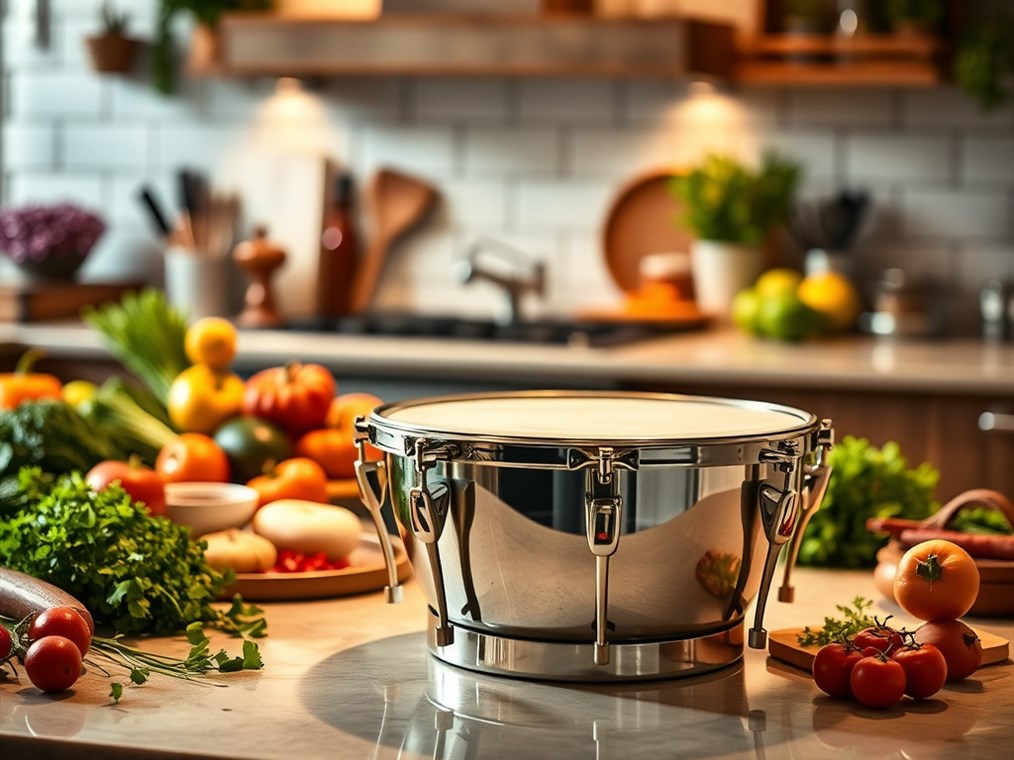Timbale: More Than Just a Fancy Pan
Ever heard the word “timbale” and wondered what it actually is? Well, pull up a chair, because it’s a term with a double meaning in the food world. On one hand, it’s a special kind of pan. On the other, it’s the delicious dish that comes out of it. Think of it like this: the pan is the stage, and the timbale dish is the star of the show. The name itself comes from the French word for “kettledrum,” and you can see why – many timbales have that classic drum-like shape. But trust me, the possibilities are way more exciting than just a drum!
The Humble Timbale Pan
So, what’s so special about a timbale pan? Typically, it’s a mold with high, straight sides, perfect for baking or steaming all sorts of goodies. You can find them in all sizes, from big ones that could bake a panettone to smaller ones, just right for individual servings. While they often narrow towards the bottom, don’t sweat it if you don’t have one. A Bundt pan, angel food cake pan, or even a springform pan can step in and do the job.
The Timbale Dish: A Culinary Chameleon
Now, let’s get to the good stuff: the timbale dish. Imagine a “deep dish” creation where the filling is completely hugged by a crust. But here’s where things get interesting – that crust can be practically anything!
- Pastry: You can’t go wrong with a classic sheet pastry, turning your timbale into something akin to a savory pie.
- Bread: Slices of bread can line the pan, creating a cozy, comforting crust that soaks up all those delicious flavors.
- Rice: Ever tried a rice crust? Cooked rice, pressed firmly into the pan, makes a surprisingly sturdy and tasty base. Think Sartu di Riso, and you’re on the right track.
- Veggies: For a show-stopping timbale, layer thinly sliced veggies like eggplant to create a natural, beautiful crust. The Timballo di Melanzana is a perfect example of this.
And the filling? That’s where you can really let your imagination run wild! We’re talking pre-cooked meats, flavorful sausages, creamy cheeses, vibrant vegetables, and all kinds of pasta shapes. Mix it all up with herbs, spices, and your favorite red or white “gravy,” and you’ve got a party in a pan. A little breadcrumbs can do the trick to thicken things up. Pop the whole thing in the oven until the crust is golden brown and the filling is bubbling, and you’re good to go.
A Taste of History
The timbale has some serious history behind it, a story as rich as its fillings. It seems to have sprung from the meeting of Mediterranean cultures way back in the medieval kitchen. Fun fact: the Italian dictionary says “timbalo” comes from the Arabic word for “drum,” which is related to the Italian word “tamburo.” Who knew, right?
You can even find timbales popping up in literature. Remember Giuseppe Tomasi di Lampedusa’s novel The Leopard? There’s a mouthwatering description of a rich macaroni timbale that just screams opulence. And it doesn’t stop there! P. G. Wodehouse’s Jeeves in the Offing and Margaret Atwood’s The Blind Assassin also give the timbale a shout-out, proving its staying power in our cultural consciousness.
Timbale Today
These days, the timbale is still going strong, with chefs and home cooks putting their own spin on this classic dish. Vegetarian and vegan versions are all the rage, showcasing the best of seasonal veggies and plant-based proteins. And if you’re looking to impress at your next dinner party, individual timbales are the way to go. They’re elegant, easy to portion, and look absolutely stunning.
One Last Thing…
Now, before you go off and start Googling, let’s clear up one potential confusion: “timbale” also refers to a pair of shallow, cylindrical drums used in Latin music. So, if you’re searching for recipes, make sure you don’t accidentally end up with a drum lesson!
The Final Bite
So, there you have it: the timbale, a dish as versatile and delicious as it is steeped in history. Whether you’re a seasoned pro or just starting out in the kitchen, diving into the world of timbales is an adventure worth taking. From its humble beginnings as a way to use up leftovers to its current status as a sophisticated culinary creation, the timbale is sure to impress. Now, go get cooking!

